If you’re looking for some inspiration for getting into the Civil War and building your forces or starting a campaign with friends, we’ve got a few recommendations to check out.
Mugginns’ Recommendations

Glory
Released in 1989 just before the height of renewed interest in the ACW, Glory stars Denzel Washington, Matthew Broderick, Cary Elwes and Morgan Freeman. It tells the story of the 54th Massachusetts Infantry, the second African American regiment to fight in the Civil War.
The movie portrays how the unit was recruited, trained, and their deployment to fight with David Hunter’s corps in South Carolina. There are numerous combat scenes and the uniforms are pretty good. The movie ends with the 54th leading the assault during the second battle of Fort Wagner, losing many men to wounds and capture.
Many consider this the best ACW movie and I’m inclined to agree. It’s concise and the acting is great. It’s inspiring and tells a story that had not been told up to that point.
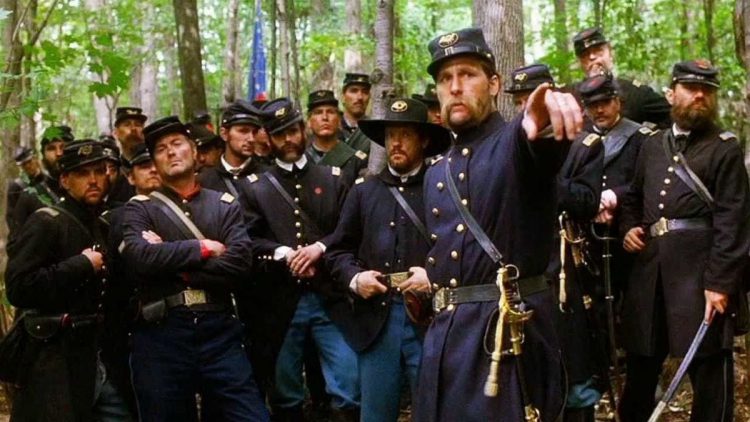
Gettysburg
Gettysburg is the ACW epic movie of our time, released in 1993, spurring huge interest in the ACW along with the PBS documentary series. Based on the book Killer Angels by Jeff Shaara, it is long, clocking in at over four hours in length. There are some major stars from the era in the movie as well including Martin Sheen, Tom Berenger, Jeff Daniels, and Sam Elliott.
The movie follows the battle from start to finish beginning with the first day and John Buford (played excellently by Sam Elliott) leading his cavalry to hold up a Confederate division and start the battle of Gettysburg. His cavalry division held the high ground near Gettysburg and stopped the Confederates from gaining it – forcing the Confederates to attack uphill on day two of the battle.
There is some lost cause BS in the movie especially on the third day during and after Pickett’s Charge but overall the movie is a net positive, with pretty good uniforms and acting (with some notoriously bad beard props). Jeff Daniels in particular stands out as Joshua Lawrence Chamberlain at Little Round Top. After you’ve checked it out definitely listen to Atun-Shei’s take on the film on YouTube.
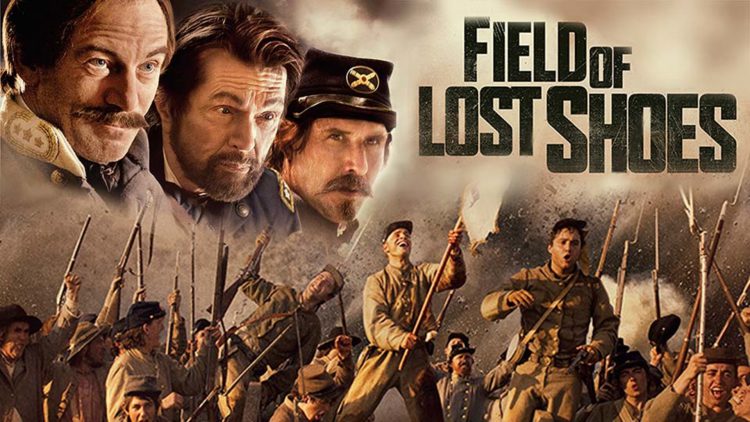
Field of Lost Shoes
A more recent release (2014), this movie stars Jason Isaacs (the evil British cavalry colonel from The Patriot and Lucius Malfoy from Harry Potter) as Confederate General John C. Breckinridge leading a makeshift defense force in the Shenandoah Valley against Federal general Franz Sigel. The main thrust of the movie is about Virginia Military Institute cadets training and then fighting at New Market, Virginia.
The acting is generally not great, especially with a lot of young or child actors. The uniforms are pretty good and locations are good. There are plenty of interesting battle scenes that will help inspire paint and terrain, and that’s the real value of this one.

Wicked Spring
This movie is one of the more respected movies released in the last twenty years as they tried a lot harder to get uniforms and locations right. It’s a low budget movie but definitely worth watching. I appreciate it as it tells a story that is fictional in a historical setting (1862 in the battle of Crampton’s Gap in Maryland). Many of the battles we fight in the ACW in my local gaming group are fictional as it makes it easier to create forces and fight smaller battles.
This one is mostly a small-setting movie with just a few actors on screen a lot of the time. I definitely recommend it as a way to get into the time period.
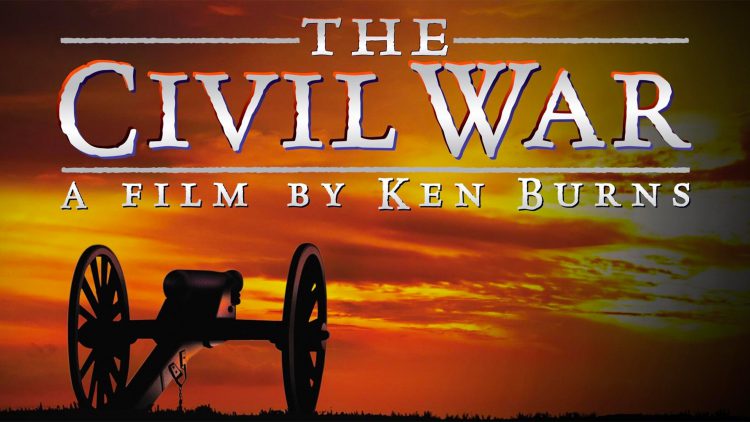
PBS Civil War
Considered by many to be the piece of media to consume about the ACW, I try to re-watch this once a year. It was a groundbreaking documentary series that really defined how to make documentaries going forward, won a ton of awards, and basically established Ken Burns as a prominent documentarian. It not only covers military actions but also homefront issues and the lives of enslaved people and freed people.
This series will help you understand the war as a whole, why it happened, who fought in it, and the consequences. The soundtrack is great and is worthy of a purchase by itself. Shelby Foote made his name and image from this series – a southern author who was not a historian – and there are a lot of articles out there about him and his views. While I have enjoyed reading some of his books, he definitely adds some Lost Cause BS to this series before people really started thinking about why it was wrong. The series as a whole is much more than that and definitely worth watching.
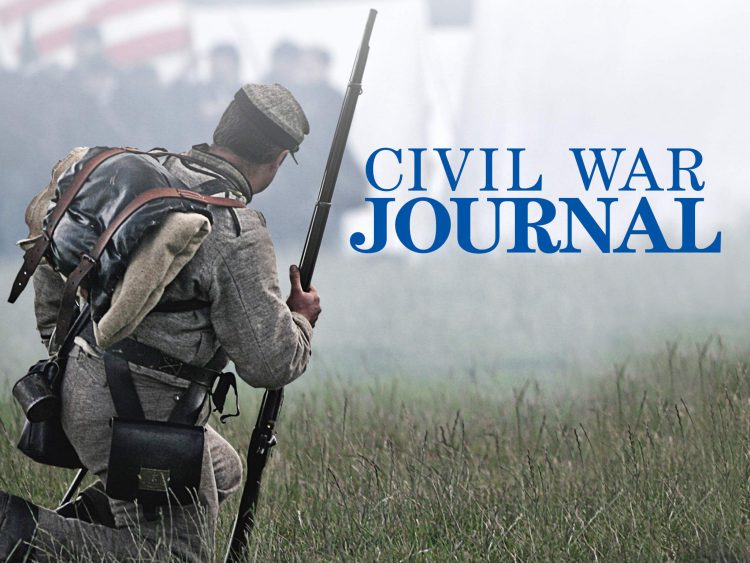
Civil War Journal
Available on History Vault, the History Channel’s streaming service, Civil War Journal is a series from the 90s that covered pretty much any topic you’re looking for on the ACW. Many of the historians interviewed in Ken Burns’ series are in this series as well. Lots of reenactment scenes are filmed and Danny Glover narrated much of it. Definitely worth a marathon session as a beginner or grog vet.

Civil War Combat
While Civil War Journal was more of a broad overview. Civil War Combat was another History Channel production that was hyper focused on certain battles and more importantly, certain commanders and units that fought in those battles. They shined the spotlight on lesser-known people and actions with a high production value.

Battle in the Civil War
This is perhaps my favorite book on the Civil War, written by Paddy Griffith. It is a large format paperback that is more along the lines of an Osprey book than a chapter book. Illustrated by Peter Dennis, a very prolific and talented artist who did a lot of work for Osprey, this book goes through how a battle began, was fought, and ended. It is a must-have, in my opinion, with a lot of small details you may not find in other general histories.
I’ve owned it and read and re-read it since I was 12 years old and I purchased a second copy recently to make sure I can have it for a long time! For wargamers, this will provide a lot of scenario ideas as well as general knowledge needed to make sure games are accurate to the period.
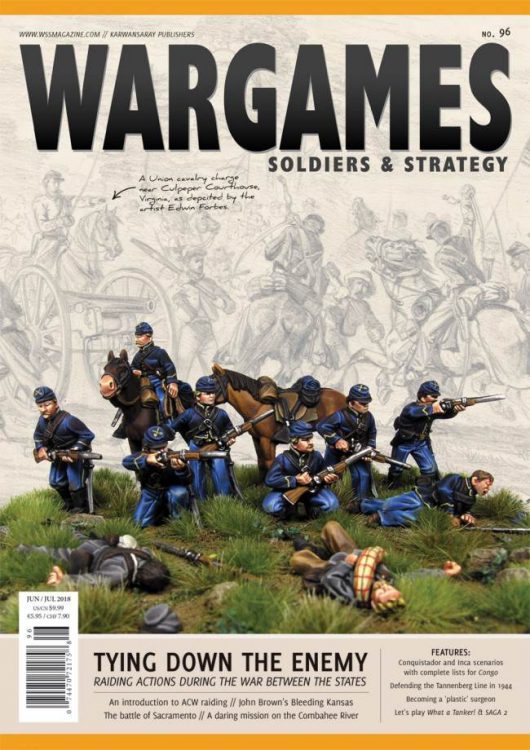
Wargames, Soldiers and Strategy 96
WSS magazine prides itself on focusing not on the huge actions that have been done over and over, but the smaller actions and lesser-known encounters that benefit from new information. With that in mind, WSS 96 focuses on ACW in a more playable format for many wargamers.
This issue provided scenarios, miniature source information, and uniform guidance for smaller actions like Bleeding Kansas (the guerilla war before the ACW between slavers and abolitionists in Kansas), general information on raids during the ACW, the Combahee Ferry raid (which Harriet Tubman played a key part in), and lots of information on cavalry during the war as raiders.
This is one of my favorite things to re-read every few months because this is where I want to focus in my ACW gaming. Raiding actions were very common during the war and require a lot fewer models and smaller boards. It’s a great way to create your own scenarios and get into ACW gaming.

Hardtack and Coffee
Most historians and reenactors consider this the best first-hand account of the war. Written by John Billings of the 9th Massachusetts Artillery, this book will help you understand the life of a common soldier, what they went through, their troubles, and how they took their minds off of battle.
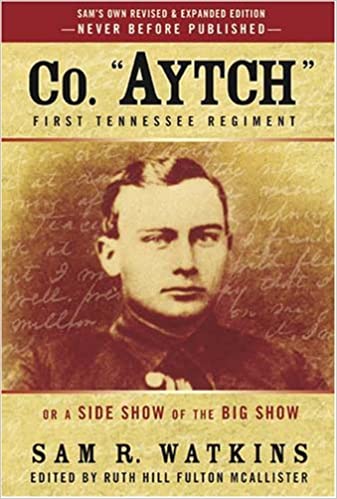
Company Aytch
Written by Sam Watkins of the First Tennessee Infantry, this is an account of the war from the start in May 1861 to the finish when his unit surrendered to Sherman in April 1865. His accounts as a ‘common private soldier’ in the army are oftentimes hilarious and his thoughts in particular about Braxton Bragg are amazing. I would consider this book and Hardtack and Coffee to be the two best first person accounts of the war, definitely worth reading.
Ilor’s Book Recommendations
More than dry accounts of battles, I really enjoy books that give a wider context to the conflict in question – why was this battle fought in this particular place, who were the leaders involved, how did their personalities shape their command decisions, and what were the strategic and political ramifications of victory or defeat? Understanding the how and the why leading up to a battle is sometimes more informative than what transpired in the battle itself.
One author in particular I’ve run across who exemplifies this contextualization of military action is Stephen W. Sears, and he’s written four books that I absolutely recommend without hesitation. In chronological order these are:
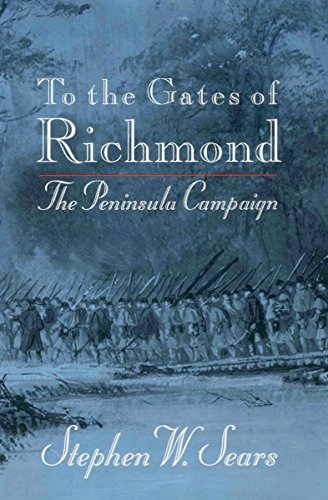
To the Gates of Richmond (the Peninsula Campaign), which details McClellan’s campaign up the James River peninsula aimed at capturing the Confederate capital at Richmond. Sears has done quite a bit of scholarly work on McClellan himself, and his insights into the personality of the Union commander really inform how the campaign unfolded. Spoiler: it didn’t go well for McClellan.
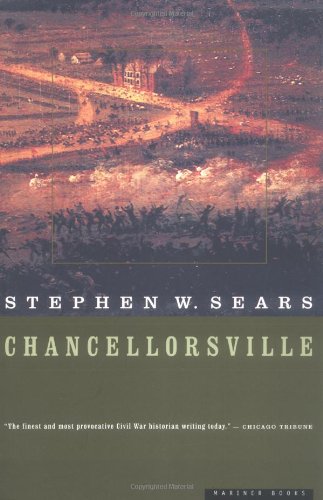
In Chancellorsville, Sears discusses the Army of the Potomac under General Joseph “Fighting Joe” Hooker. An unorthodox commander, Hooker instituted a number of changes in the Army that today seem like foregone conclusions – especially a centralized organization for military intelligence – but which were radical for their time. After the overly cautious approach of McClellan and the ineptitude of Burnside, Hooker represented an audacious new way of doing things. Notably, when he launched his military campaign he stole a 48-hour march on General Lee and was across the Rappahannock River before the Confederacy knew he was moving. The chaotic events of the battle of Chancellorsville may have gone very differently if Hooker himself had not suffered a concussion during the battle, rendering him incoherent for several critical hours. This book is also a fantastic analysis of how the best-laid plans can go hopelessly awry once the shooting starts, as the sheer number of tragic misfortunes that befell both sides is staggering.
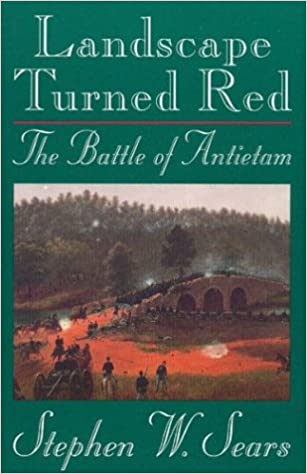
Landscape Turned Red details Lee’s first campaign into Union territory during the late summer of 1862, a campaign which would culminate in the battle of Antietam. Here as well the historical context is important, as Lee was under significant political pressure to score a significant win on Union soil as a way to convince England and France of the viability of the Confederacy as a nation. Considering that in the summer of 1862 there were over half a million British textile workers without employment due to Union blockades of cotton, there was significant domestic political pressure within England to side with the Confederacy. The book talks about not just the battle of Antietam itself, but of the movements leading up to it – including the infamous incident with “General Order 191” which saw Lee’s entire concept of operations fall into Union hands, leading McClellan (who was once more in command of the Army of the Potomac) to act with uncharacteristic haste.

Finally, Gettysburg includes not just gripping descriptions of the battle itself (a massive affair that raged over three days), but of the blind maneuvering of the two armies that led to the battle being fought in that location. Interestingly, had Lee had a better idea of where Meade’s forces lay, the Confederates might have been able to lure the Union army out of position and slip in behind them – Lee’s original plan – and force them to attack on ground of his choosing. Gettysburg was one of the locations he saw as favorable, but his lack of cavalry scouts – the normally dependable J.E.B. Stuart was off on an extended and unnecessary cavalry raid – deprived him of the opportunity. Sears account brings to life the frustrations of both commanders as the battle spirals out of control.
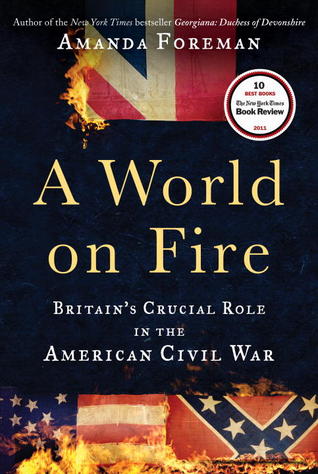
I mentioned England, and the relationship between the “Old Country,” the United States, and the Confederacy was a complicated one. Amanda Foreman’s A World On Fire is a fantastic recounting of that relationship, and extends to both the political and personal. From accounts of British, Welsh, and Scottish expats who went overseas to fight for both sides, as well as those of Irish immigrants heavily recruited into the Union army, Foreman provides compelling examples of the attitudes they held and the conditions they endured. Further, accounts of ambassadors, businessmen, spies, and saboteurs sheds light on aspects of the conflict that are not found in books about battles.
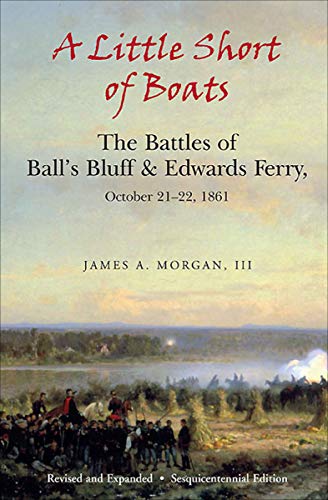
But if you’re going to read books about battles, a great place to start is A Little Short of Boats by James A. Morgan III. This is an analysis of the battle of Ball’s Bluff, one of the early engagements of the war that took place on October 21st, 1861. Intended to be a “slight demonstration,” the battle was the result of faulty scouting by moonlight – with Union scouts mistaking a line of low pine trees as a field of tents. Trying to make a “surprise attack” on a “Confederate camp,” a small Union force crossed the Potomac river. When they were discovered by Confederate pickets, things quickly got hairy. This book is great because it details a very small battle (great for tabletop wargaming) with big political implications (including the death in battle of a sitting US Senator, Colonel Edward Baker).

Vicksburg by Donald L. Miller is a fantastic analysis of Grant’s campaign to capture the strategically vital city of Vicksburg. It delves into the personalities of some of the most intriguing people of the era – particularly generals Grant and Sherman, as well as admirals Porter and Farragut – and provides an extensive background on the actions leading up to the fighting at Vicksburg itself. Descriptions of numerous smaller actions – such as the ill-fated Steele’s Bayou Expedition – are given, and there’s plenty of fodder here for gamers wanting to recreate some of the war’s most intense riverine fighting. This book also delves into the socio-political effects of the Emancipation Proclamation in the Mississippi Delta, dealing with Grant’s changing views on the subject from his initial ambivalence about abolition to his ultimate decision to aggressively liberate slaves as a matter of Army policy.
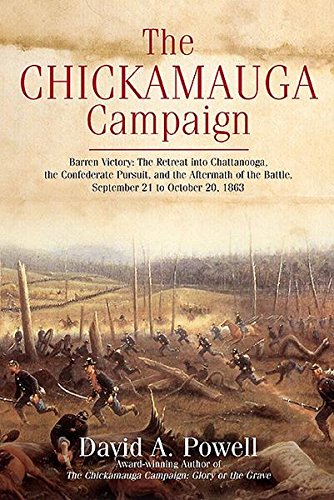
Finally, David A. Powell’s massive 3-volume compilation The Chickamauga Campaign lays out in fascinating detail the movements and minor actions of Rosecrans’ Army of the Cumberland and Bragg’s Army of Tennessee before launching into a gripping account of the battle itself. Chickamauga is an incredibly complicated battle, as the terrain was very rough, there were a lot of moving parts, and (especially on the Union side) a very disjointed organization, with brigades being lent out willy-nilly and much confusion as to who should command them. Here again significant space is given over to the personalities of the commanders involved on both sides, and on the political infighting in both headquarters that all too often led to disastrous outcomes on the field of battle.
Have any questions or feedback? Drop us a note in the comments below or email us at contact@goonhammer.com.


